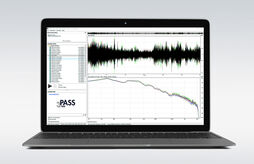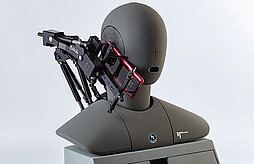DECT and fixed-line telephony
Functionality & quality versus price
Despite the prevalence of mobile phones, communication via fixed-line and particularly DECT (digital enhanced cordless telecommunications) telephones still plays an important role. These devices are popular in professional and private settings thanks to their high reliability, good network accessibility and low cost. Requirements regarding voice quality have continued to grow with the emergence of wideband telephony and new voice codes. Compatibility with a whole range of different interfaces must be ensured. Even more so than for mobile communication, customers expect excellent voice quality – and this poses some real challenges for manufacturers.
All criteria under control
To optimize the voice quality of fixed-line and DECT telephones, manufacturers and test laboratories have to test and analyze all the relevant communication parameters.
The following aspects are also important for DECT telephones:
- Interoperability between the fixed part and portable part
- Compatibility among devices from different manufacturers
- Successful certification
Reference interfaces for the fixed part and portable part are vital for DECT-specific tasks because these are the only way in which the two parts can be tested and evaluated separately.
Optimizing DECT and fixed-line telephones effectively
The unique combination of a reference interface with standardized measurements for PSTN (public switched telephone network) and DECT telephones provides manufacturers and test laboratories with the perfect test environment for optimizing voice quality.
Our solutions enable lab-based testing to:
- Establish a direct connection with the DECT reference interface to simulate the fixed part or portable part
- Conduct automated and reproducible tests in accordance with international standards (e.g. CAT-iqTM, ETSI EN 300 176-2)
- Simulate a PSTN telephone, e.g. for testing IP-based home gateways by means of a reference interface
- Create complex test scenarios with the realistic simulation of background noise and user behavior










